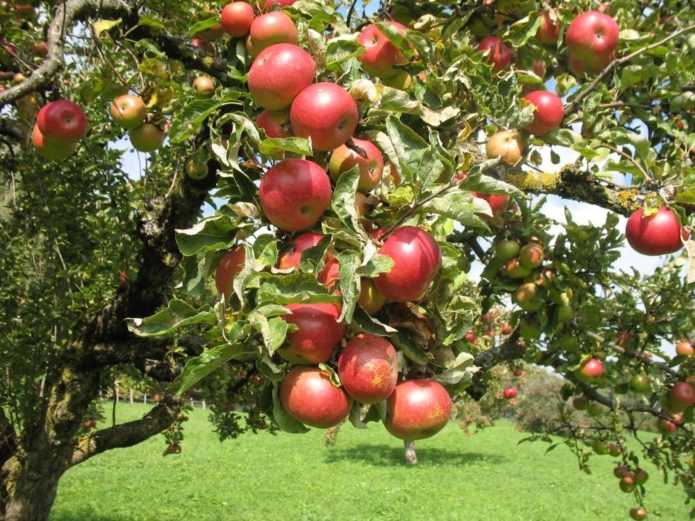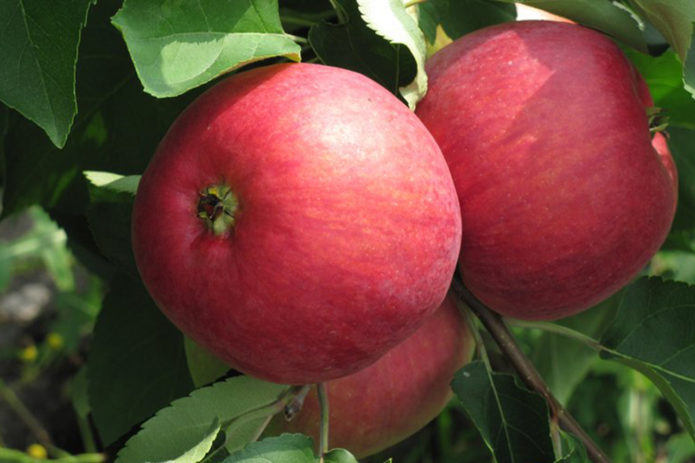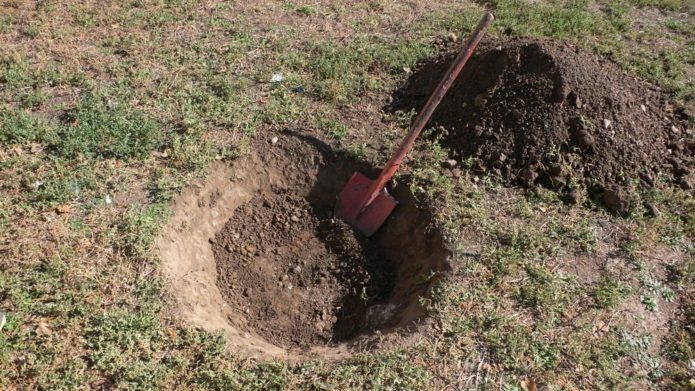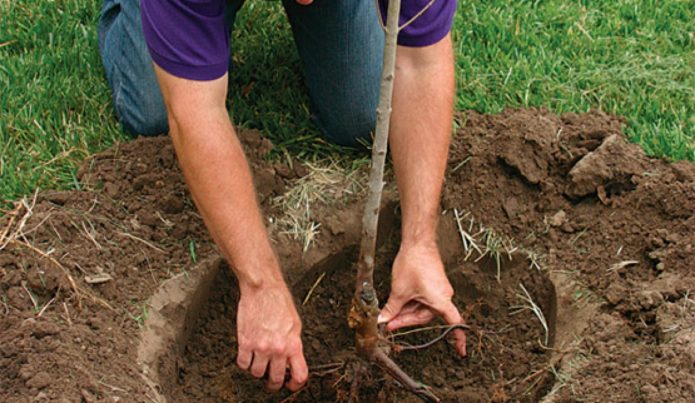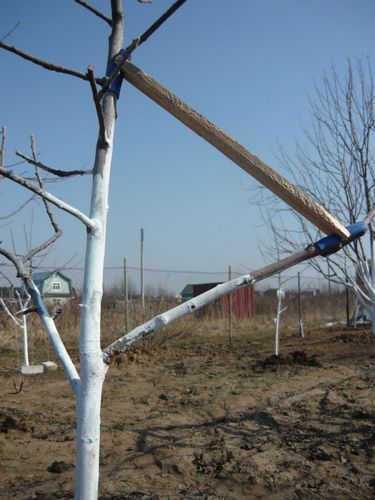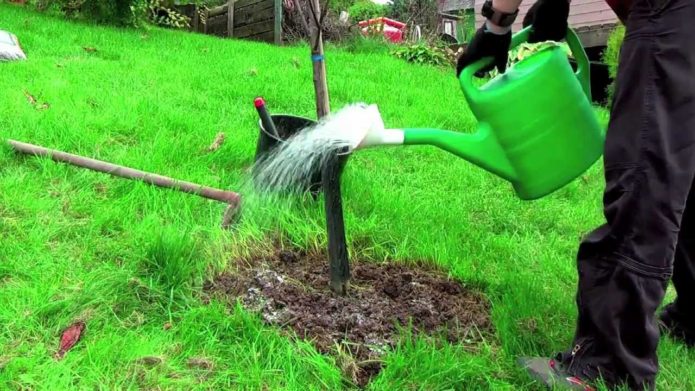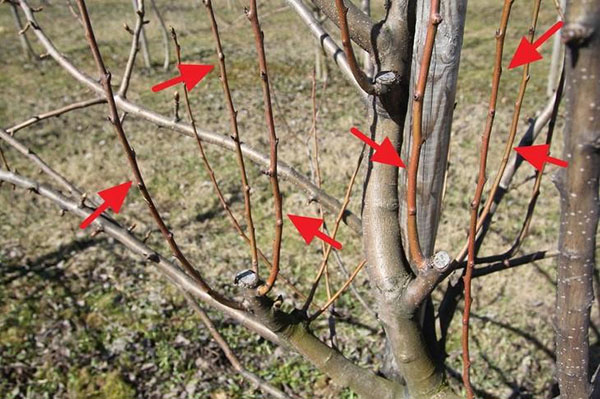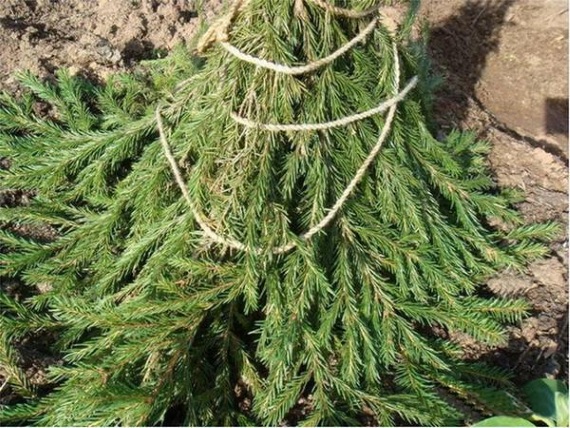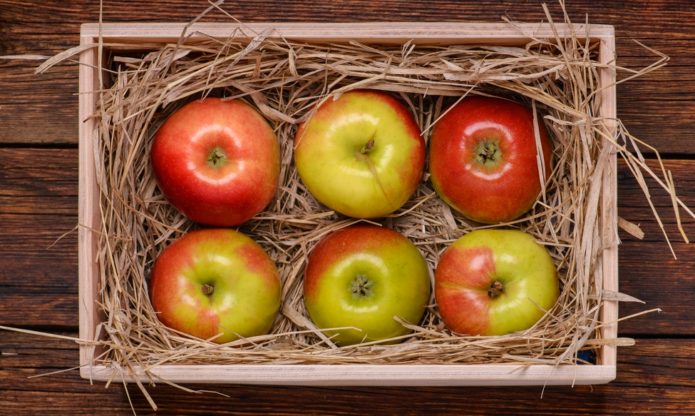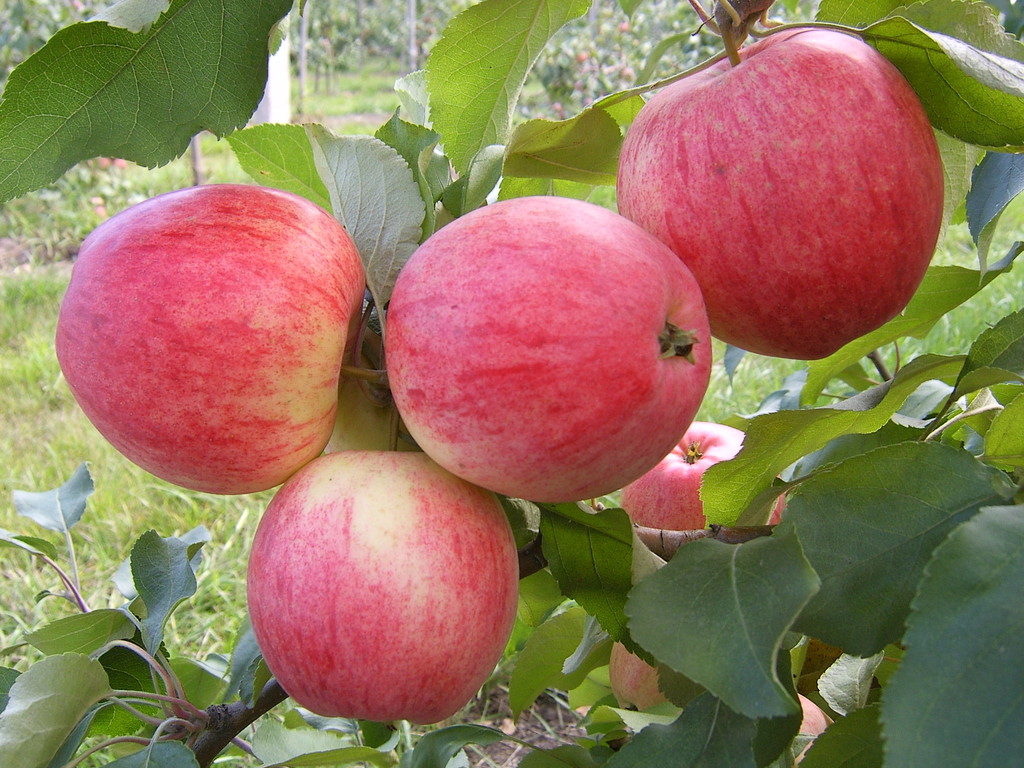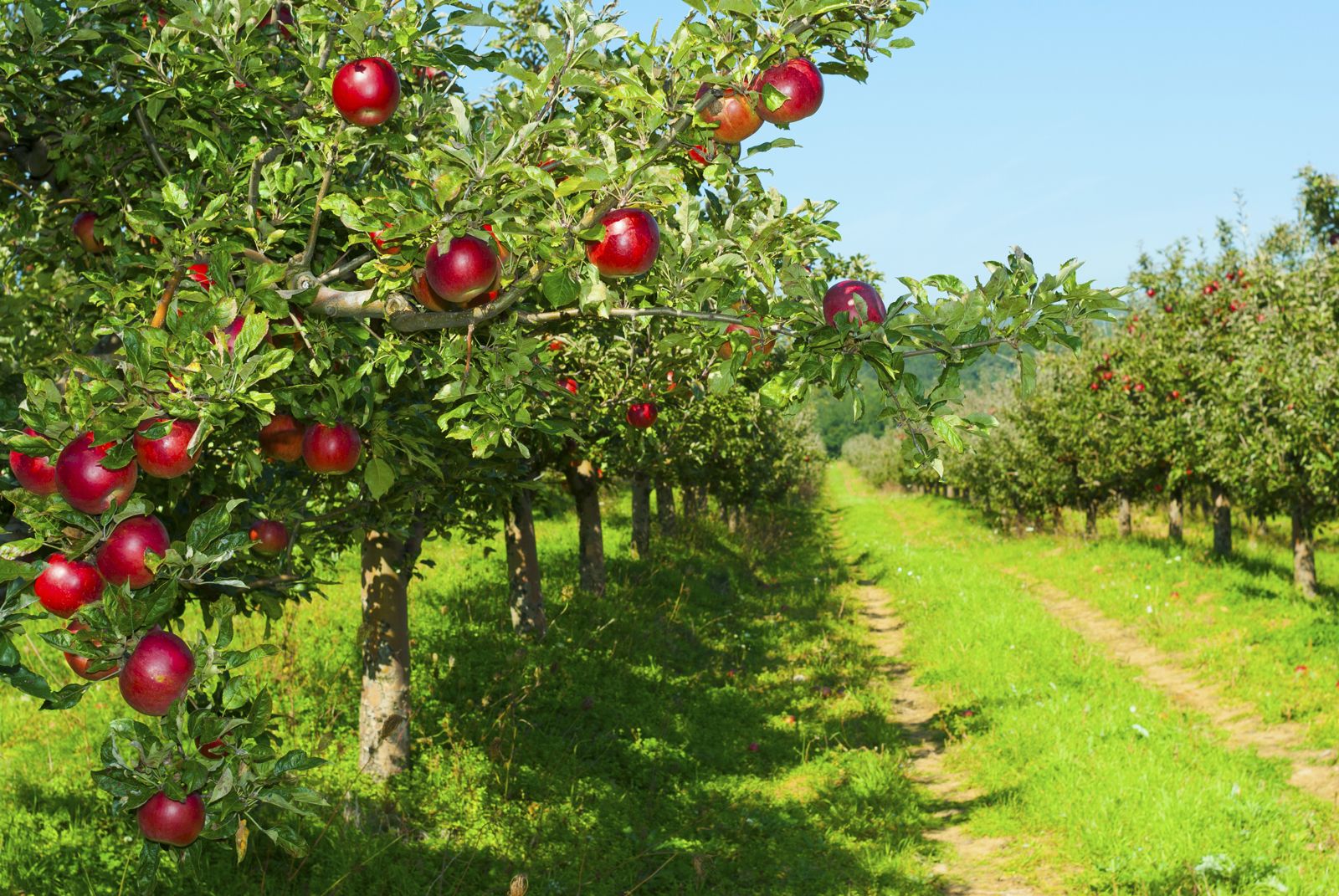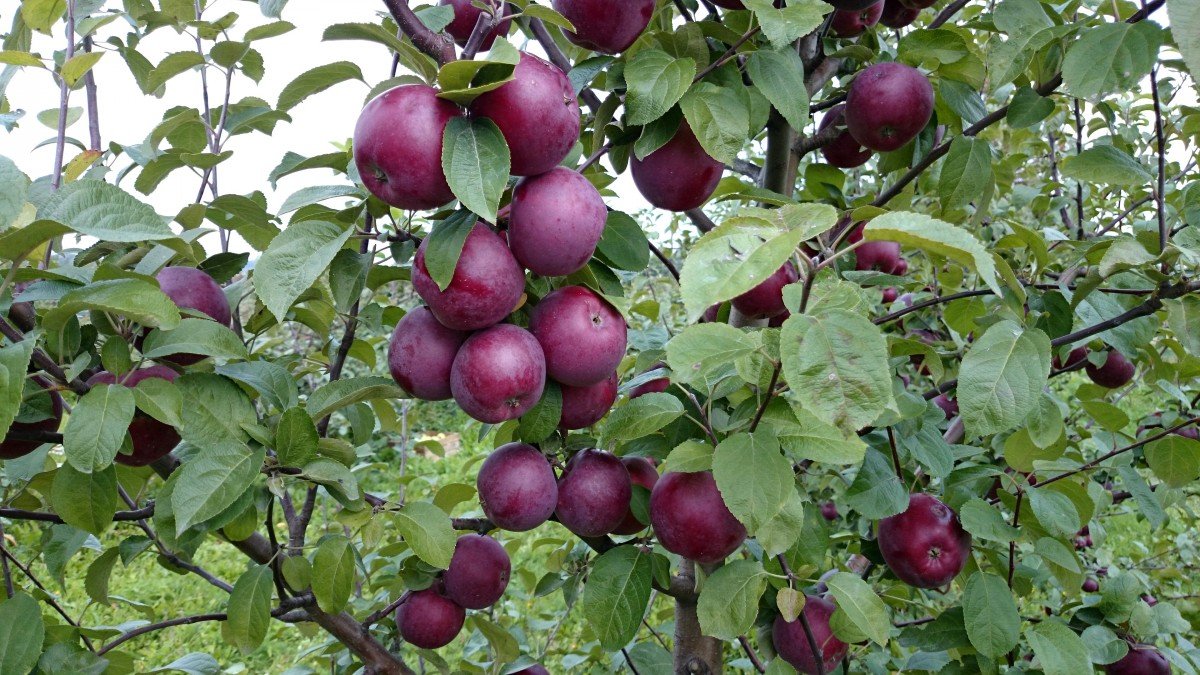Unusually beautiful apples of excellent taste, stored for 2-3 months and at the same time only get better - this is how gardeners describe the Zhigulevskoe variety. But, in addition to excellent qualities, the variety has drawbacks, and quite significant ones, however, despite them, it has retained its popularity for more than half a century!
Content
The origin of the apple variety Zhigulevskoe
The variety was bred in 1936 at an experimental station near Samara. Zhigulevskoe was created by the breeder S.P. Kedrin by crossing the domestic Borovinka apple tree and the American Wagner. The result is seedlings that have grown into trees with outstanding characteristics.
In 1949, the variety entered the state test, and was included in the State Register of Breeding Achievements in 1965. Today its safety is ensured by the Research Institute of Horticulture and Medicinal Plants "Zhiguli Gardens" (Samara). The variety is recommended for cultivation in the Lower Volga, Central and Central Black Earth regions, Eastern Siberia and the North Caucasus.
Description of the apple tree
The tree grows tall or medium-sized. The crown is spreading, has the shape of a wide pyramid, thin. Skeletal branches tend to grow at an acute angle to the trunk, which is fraught with fractures. This must be taken into account when shaping, pruning and leaving.
The advantages of the variety include high yield and attractive appearance and taste of apples. They are large, flat-round in shape, weighing 180-200 g, some specimens up to 350 g. The yield of an adult tree can reach 250 kg. Late autumn variety, with amicable ripening, all fruits are ready for harvest at the end of September.
The apples look very attractive - the golden skin is covered with a striped red-orange blush. The pulp is juicy, coarse-grained, with a creamy hue, very tasty, sweet and sour. And these qualities only improve during storage, reaching a maximum by November. A characteristic feature of the variety - the surface of the fruit is ribbed, with small tubercles.
Among the disadvantages of Zhigulevsky are instability to scab and poor tolerance to low temperatures. Even at home, Zhigulevskoye does not always survive the winter safely. Moreover, winter hardiness varies even within one region and depends on the position of the site. The tree will freeze:
- in the lowlands;
- near the river;
- in places where cold air stagnates.
Frosts during flowering are also terrible for this variety.
The variety also has such a relative disadvantage as the frequency of fruiting.
Planting an apple-tree variety Zhigulevskoe
Buy a seedling of this variety only if you live in the region for which it is zoned. Follow the procedure for landing as follows:
- Make a planting hole at a distance of 4–5 m from the fence, buildings and other trees, preferably from the south side. Dig it into the depths of 2 bayonets of the shovel, with a width of 60 cm. The larger the pit, the more food for the apple tree you will bring into it. Set aside the soil from the top 30 cm separately, and remove the soil taken from a greater depth (infertile) from the site.
- Mix the removed fertile layer in a 1: 1 ratio with humus or compost, add a glass of superphosphate and potassium sulfate (you can replace them with a liter of ash).
- Mix all components thoroughly and fill the pit with the mixture. A small embankment should form on top (about 20 cm).
- Add regular soil from the garden if necessary. You can plant an apple tree in 2-3 weeks, when the soil in the pit sags and levels out.
If you do not have time to wait and you plant a tree right away, you need to form a small embankment and plant a seedling a little higher than normal so that when the soil sags, the root collar does not end up underground.
- When planting, make a hole the size of the seedling root. Form a hill out of the soil in the center of the pit so that the root collar (the place where the uppermost root originates) after planting is at ground level, and the grafting site, respectively, is higher.
- Plant, water, mulch, tie to a peg if necessary.
Video: general rules for planting a seedling
Growing features
The main task when growing Zhigulevsky is to correctly form the crown before entering fruiting: it should not have skeletal branches extending from the trunk at an acute angle - less than 45 °. Leave only branches growing at an angle close to a straight line on a young seedling. In the absence of such at a young age, you need to make the branches grow correctly. There are two options for resolving the issue:
- bend the branches from the trunk and tie them to the pegs stuck next to them;
- put the spacer. If such a procedure is done in the spring, then by the fall the branches themselves will maintain the desired position.
If you have already got an adult malformed apple tree, then during the period of fruit filling, be sure to put supports under the skeletal branches.
You can fight with another drawback - the frequency of fruiting. In a productive year, when there are too many apples, or, on the contrary, there was a cold spring and an unsuccessful summer, ripening is delayed, it makes sense to perform rationing of the harvest, that is, to remove some of the still green fruits in order to reduce the load on the apple tree. Then she will have time and find the strength to pour the remaining fruits, lay the buds of the next year and prepare for winter. By the way, gardeners noticed that it is the abundantly fruiting apple trees that freeze. Seedlings and young trees tolerate severe winters easily.
Video: apple harvest rationing
The rest of the care for Zhigulevsky is standard. It includes watering:
- at the beginning of the growing season;
- during the budding period;
- during flowering;
- in the ovary growth phase;
- in the fall for moisture charging.
The approximate watering rate is 30 liters per square meter of the trunk circle, and the water charging rate is 1.5 times more.
Begin fertilizing from the year of entry into fruiting. Different fertilizers are needed at different periods:
- in the spring - nitrogen;
- during flowering and fruit setting - complex with all macro- and microelements;
- in the fall - phosphorus-potassium.
The crown of Zhigulevsky is rare, so thinning pruning is not needed. Remove only dry and broken branches annually, as well as tops - growing vertically upward.
Pests and diseases have long ceased to be a problem. Make it a rule not to wait for worms to appear in apples, scab spots and other fungal diseases on the leaves. Carry out preventive treatments of the entire garden in the spring, before flowering, and in the fall, after harvest, with complex action fungicides and insecticides. If signs of damage appear in the summer, then one treatment is not enough, you need to repeat 2-3 times with an interval of 10-14 days.
In preparation for winter, whitewash the trunk and skeletal branches to protect the bark from frost damage. Cover the trunk circle with a layer of 5–7 cm. Protect the trunk from rodents by tying it with spruce branches with needles down.
Harvest purpose
The purpose of Zhigulevsky's apples is for dining, that is, fresh consumption. For storage, send only whole fruits; for this, put them in boxes or baskets with the stalks up. It is better to separate the layers with paper or shavings. Keep apples in a dark and cool room at a temperature of –1 ... + 1 ° C. The maximum shelf life of the Zhigulevskoye variety is until the New Year.
Of course, such an abundance of fruits that this apple tree gives cannot be eaten even for the entire storage period. Surplus crops will have to be sold, distributed or processed into juices, dried fruits, mashed potatoes and other winter preparations.
Gardeners reviews
Zhigulevskoye was also at the former dacha. Awesome beauty large red fruits with bright yellow pulp. How to the exhibition! Delicious, juicy. But the tree must be formed, as it likes to give branches with an acute angle of departure, fraught with fractures from (I repeat) a plentiful heavy harvest. It never froze.
In fact, the variety has one big problem. It is not hardy. That is, its winter hardiness even at home is only average. In my opinion, it is lower than that of the Bryansk variety. Moreover, it is interesting that before entering fruiting, the variety behaves quite winter-hardy, but after a productive year it freezes strongly. Gennady Fedorovich (Novgorod region) also wrote about this feature. I suspect that the apple tree does not have time to prepare for winter, since the ripening of the fruits occurs quite late. The stem and the sites of origin of skeletal branches suffer from frost damage.
In fact, the varieties of Candy, Orlovim and Zhigulevskoye have approximately the same winter hardiness (the latter has the lowest). Therefore, much depends on the microclimate of a particular site. If it is located in the middle and upper part of the slope, there is no threat. In the lowlands, where frosty air stagnates (not ventilated), freezing is possible in severe winters. Hence, there are different data on the winter hardiness of the Zhigulevskoye variety in the Moscow region. The variety is certainly valuable, if not for the average winter hardiness. The maximum taste is gaining during storage by November.
Zhigulevskoe is a very productive apple tree, but when deciding to buy a seedling of this variety, take into account its low winter hardiness and the need to form a crown from branches extending at the right angle.
